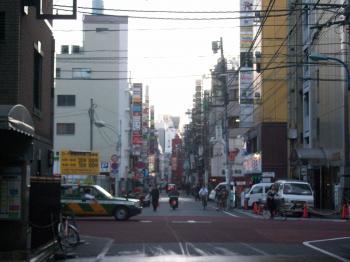To drive or not to drive? A good question when it comes to considering a visit to Japan. Why bother? Japan is renowned the world over for its public transport efficiency. Shinkansen (or Bullet Trains as we know them in the west) blaze a triumphant trail between major cities, a celebration of what trains can and should be. Cities lay prostrate before us with an all access network of commuter transport, where platforms shine and trains don’t like to keep punters waiting more than a minute or two. This and more, brought to the traveler by a customer service so humble and attentive that one might be so ridden with guilt as to fall to ones knees with the plaintive cry, I’m not worthy!
Yes, Japan’s public transport system is a remarkable achievement in logistics and engineering which, being from the UK, leaves me hanging my head in shame at the thought of hapless Japanese tourists trying to negotiate their way through the myriad of a inefficiencies that blight the transport in my homeland.
So why drive? Well, the truth is that the road reigns king here just as it does the modern world over. Many people working in Japan live in the suburbs or a major city or a neighboring town and driving is one of their only options to get to work. Some of us may even like driving. Whatever the reason, the number of cars on the road here in Japan indicates that no matter the public transport efficiency, people drive.
I surf, therefore I drive. I’m not keen on it but my decision to do so is purely utilitarian. Living in Tokyo and surfing the Pacific facing beaches to the east in Chiba really requires a car. 6Ft worth of surfboard and a heavy wet suit don’t go down well with the commuters. So it is that I offer up some reflections on the challenges that face the driver when trying to negotiate a way out of the worlds largest urban area. Challenges that may not be found in your standard drivers handbook.
Cyclists
Not Lycra clad, Tour De France contenders with thighs like tree trunks. I’m talking about regular two wheeled commuters riding bikes that, back home, would have seen the onset of endless torment at the hands of local bullies. But, the Japanese place their shame elsewhere and these bikes are an abundant presence on inner-city and suburban roads. Sometimes they flow with the traffic, sometimes against. They flit between pavement and street with reckless abandon, and stretch the laws laid down by traffic lights. These urban riders are multi taskers of the highest proficiency, too. They can navigate their two wheeled steeds through the traffic whilst talking on their phones, smoking a cigarette and holding an umbrella to protect their new hairdo. All of which means they may not be paying as much attention to cars as they should. Keep your eyes peeled. The road is as much theirs as it is yours. Learn to love them, embrace their presence and slow down.

 Urban roads.
Urban roads.
So, driving in Japan. Is it a good idea? Well, the truth is that it’s a great way to use a beaten path to get off ‘the beaten path’. Local buses try to do the same but without some solid language skills and a good idea of where you’re going their service may be rendered redundant. A bit of driving can take you deeper into the mountains and get you closer to the sea. It will help to open up a country far removed from the modern, urban infrastructure within which the vast majority of the population exists and the vast majority of visitors see.
Driving overseas can be daunting, especially if it means navigating some of the worlds largest urban areas. Still, if this driver can do it, I’d venture to say that anyone can.